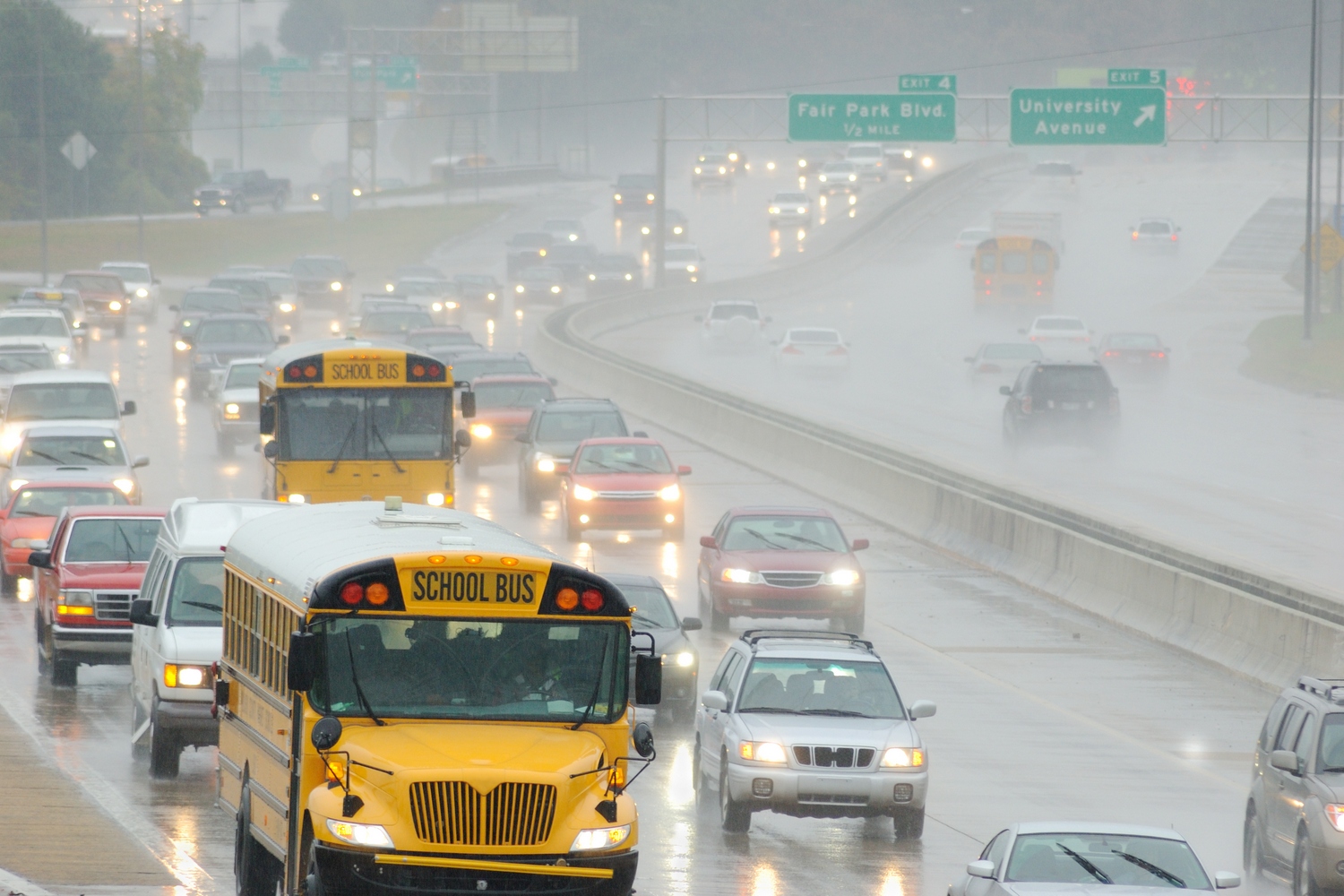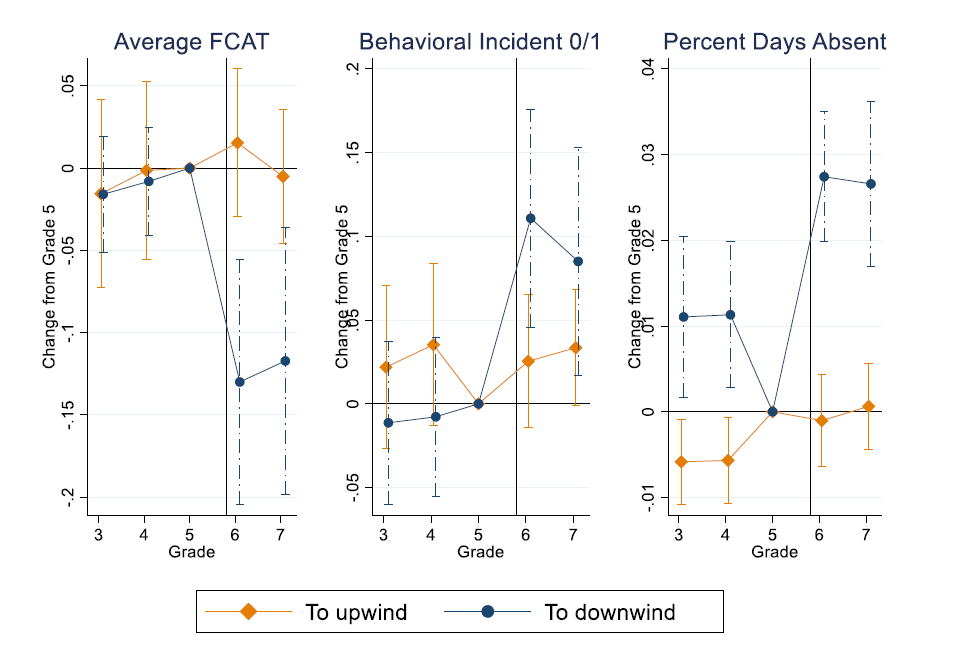Over 6.4 million children in the U.S. attend public school within 250 meters of a major roadway. Despite a growing body of research on air pollution, academic achievement, and human capital formation, little is known about how a few years of exposure to traffic pollution during childhood might affect educational outcomes.
A new paper by Jennifer Heissel, Claudia Persico and David Simon shows the negative effects of traffic pollution on children’s health, absences, test scores and behavioral incidents. The authors follow children who must switch schools from elementary to middle school (or middle to high school) where the first school is upwind of a highway and the second school is downwind of the highway. Both schools are within 0.4 miles of the highway, but one gets more pollution.
The analysis finds that students who move from an elementary/middle school that feeds into a “downwind” middle/high school in the same zip code experience decreases in test scores, more behavioral incidents, and more absences, relative to when they transition to an upwind school (see figure).
The authors suggest that policymakers should think more about where to build schools. Even if the land is cheap, there are large hidden costs to children’s health and development. Also, even within zip codes, microclimates can contribute to inequality in children’s outcomes due to school placement.

